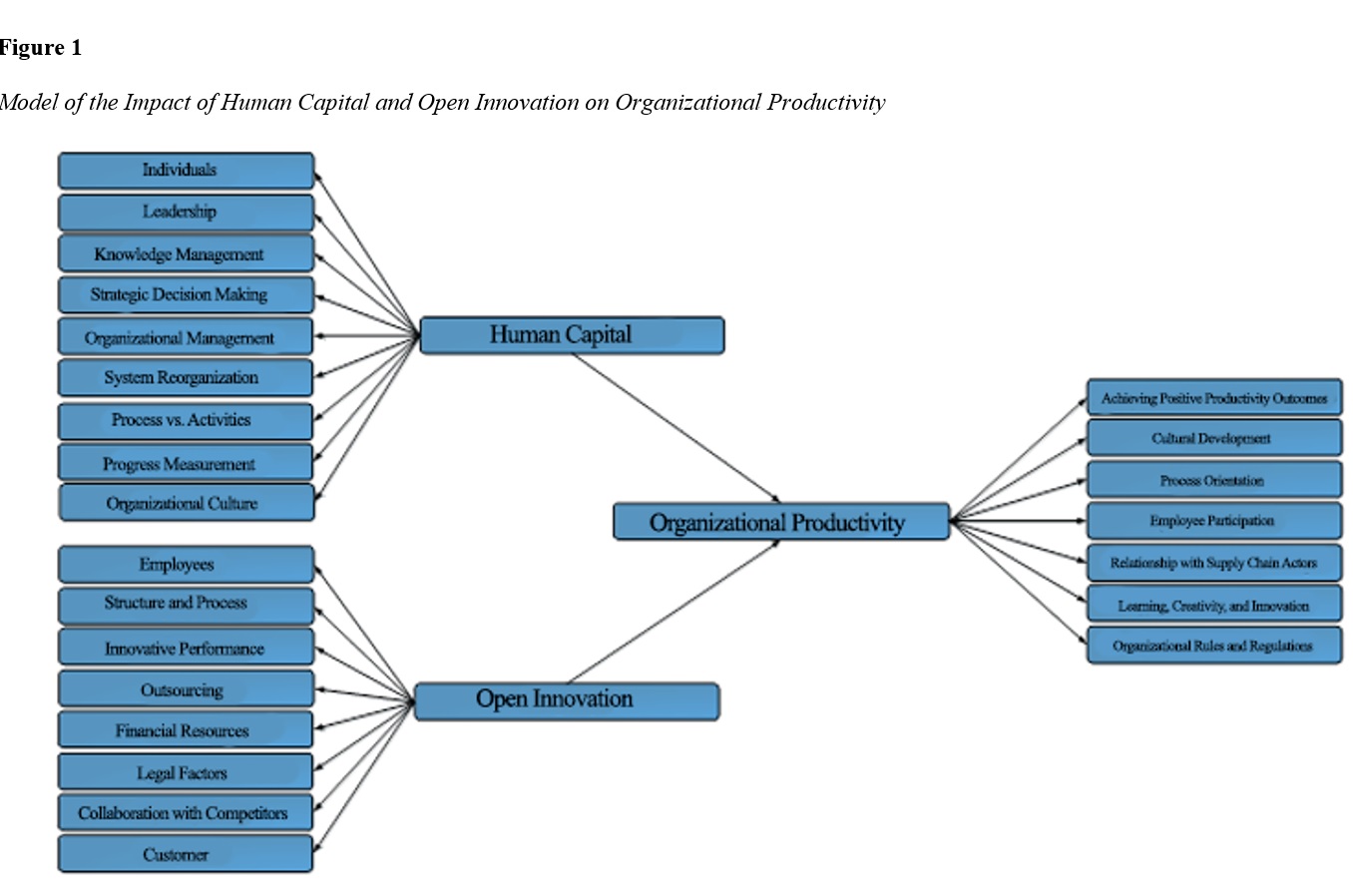Presentation of the Model for the Impact of Human Capital and Open Innovation on Organizational Productivity Using the Qualitative Grounded Theory Method with Glaser's Approach
Keywords:
Human Capital, Open Innovation, organizational productivity, Qualitative Grounded Theory MethodAbstract
Objective: The aim of the present study was to present a model for the impact of human capital and open innovation on organizational productivity.
Methodology: This research gathered the necessary information by reviewing and evaluating previous studies in the field, as well as conducting in-depth interviews with experts and specialists in the areas of human capital, open innovation, and organizational productivity, who had practical experience at decision-making levels. Using the grounded theory analysis method, the study coded, categorized, and presented a conceptual model.
Findings: After conducting interviews with experts and specialists in the fields of human capital, open innovation, and organizational productivity, and implementing the coding process using the grounded theory method, a total of 3 selective codes, 24 axial codes, and 71 open codes were identified. To validate the extracted codes, a focus group consisting of 10 experts, who were initially interviewed, was formed. The extracted codes were presented to them, and they were asked to provide their opinions on these codes. The result of the focus group's evaluation and discussion on the extracted codes indicated that the suitable model for assessing the impact of human capital and open innovation on organizational productivity includes 3 dimensions: human capital, open innovation, and organizational productivity, and 24 components, including 1) individuals, 2) leadership, 3) knowledge management, 4) strategic decision-making, 5) organizational management and structure, 6) system reorganization, 7) process versus activities, 8) progress measurement, 9) organizational culture, 10) employees, 11) structure and process, 12) innovative performance, 13) outsourcing, 14) financial resources, 15) legal factors, 16) collaboration with competitors, 17) customer, 18) achieving positive productivity outcomes, 19) cultural development, 20) process orientation, 21) employee participation, 22) connection with supply chain actors, 23) learning, creativity, and innovation, and 24) organizational rules and regulations.
Conclusion: Organizational managers should define and design clear systems and structures, including appropriate promotion and reward systems, and financial regulations that monitor environmental changes and competitors' actions.
Downloads

Downloads
Additional Files
Published
Submitted
Revised
Accepted
Issue
Section
License
Copyright (c) 2024 Farhang Rahimi (Author); Naser Seifollahi (Corresponding Author); Bahman Kargar Shahamat, Saeid Baghersalimi (Author)

This work is licensed under a Creative Commons Attribution-NonCommercial 4.0 International License.















